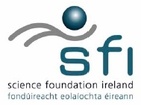Experimental Study of Six Different Parallel Matrix-Matrix Multiplication Applications for Heterogeneous Computational Clusters of Multicore Processors
| Title | Experimental Study of Six Different Parallel Matrix-Matrix Multiplication Applications for Heterogeneous Computational Clusters of Multicore Processors |
| Publication Type | Report |
| Year of Publication | 2009 |
| Authors | Alonso, P., R. Reddy, and A. Lastovetsky |
| Pages | 47 |
| Date | 02/2009 |
| Institution | School of Computer Science and Informatics, University College Dublin |
| Keywords | heterogeneous algorithms, HeteroMPI, HeteroScaLAPACK, mpC |
| Abstract | In this document, we describe two strategies of distribution of computations that can be used to implement parallel solvers for dense linear algebra problems for Heterogeneous Computational Clusters of Multicore Processors (HCoMs). These strategies are called Heterogeneous Process Distribution Strategy (HPS) and Heterogeneous Data Distribution Strategy (HDS). They are not novel and have already been researched thoroughly. However, the advent of multicores necessitates enhancements to them. We then compare the results of execution of these six applications. The results reveal that the two strategies can compete with each other. The MPI applications employing HDS perform the best since they fully exploit the increased thread-level parallelism (TLP) provided by the multicore processors. However, for large problem sizes, the non-cartesian nature of the data distribution may lead to excessive communications that can be very expensive. For such cases, the HPS strategy has been shown to equal |
| Attachment | Size |
|---|---|
| Parallel_matrix_matrix_mutiplication_multicores.pdf | 373.08 KB |
- 88311 reads
- XML
- BibTex
- Google Scholar



